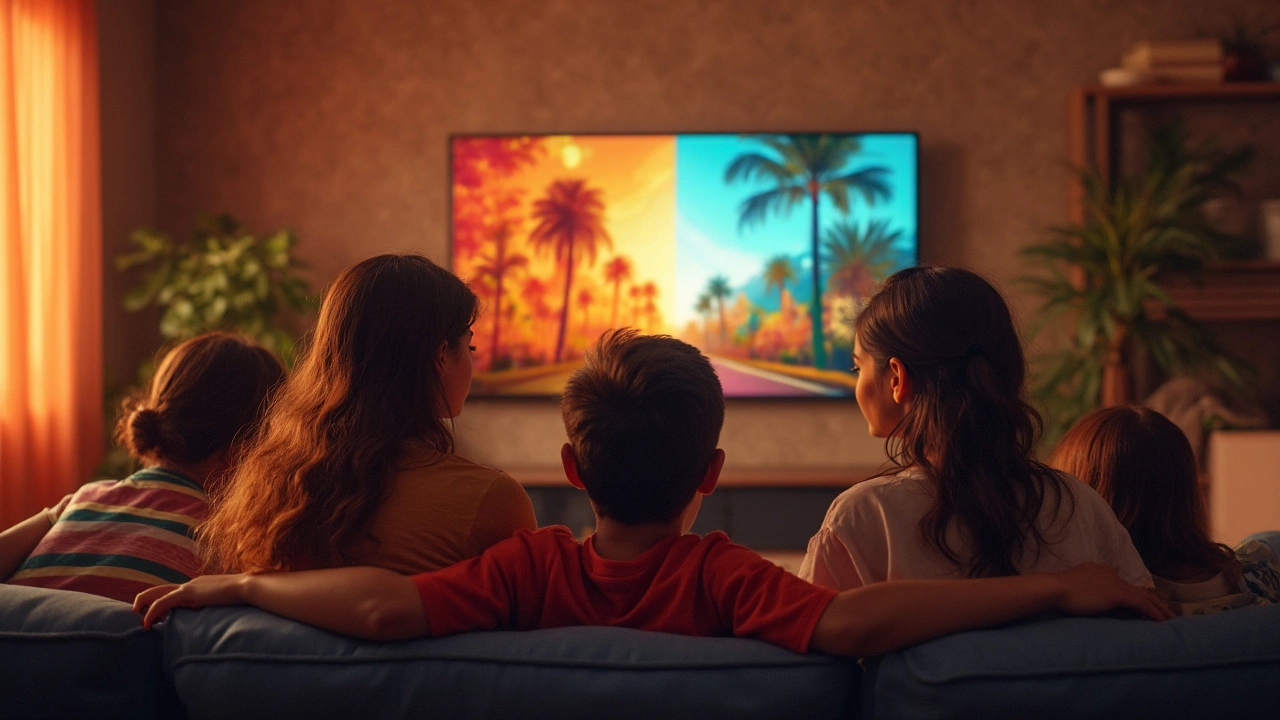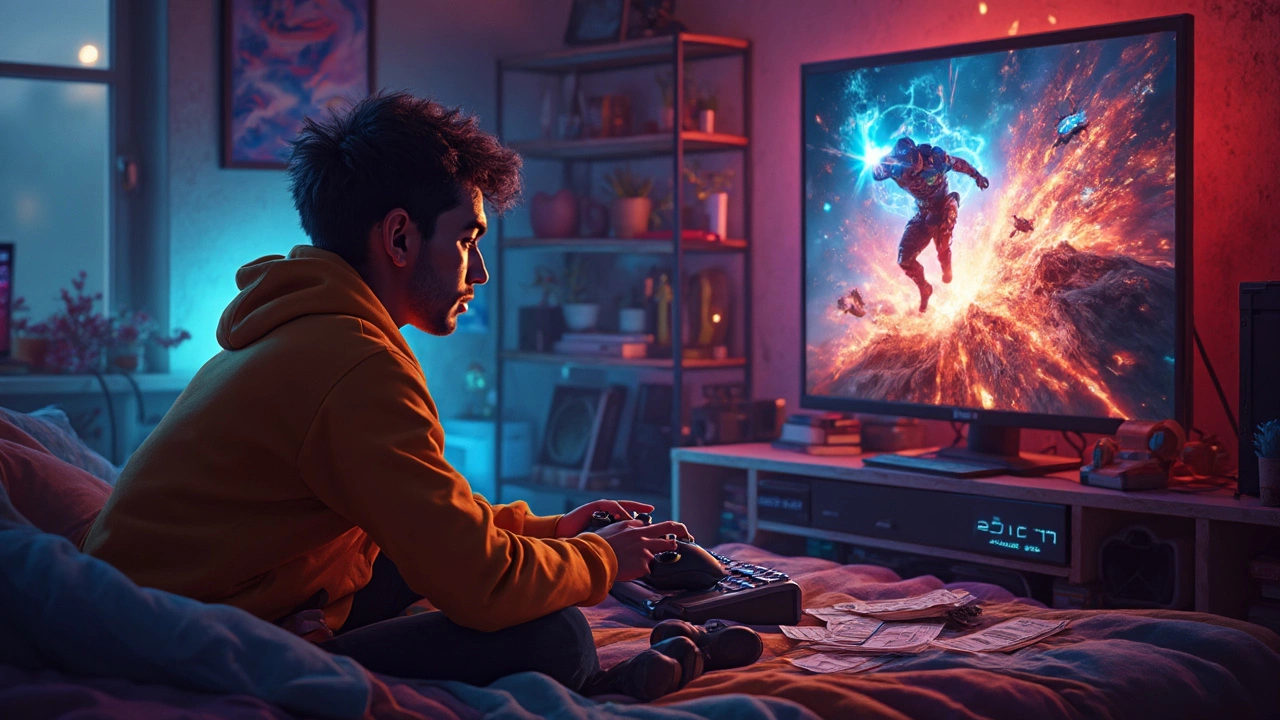
You’d think sharper is always better, right? Every electronics store is loaded with dazzling 4K TVs that make your old Full HD set look almost prehistoric. But is jumping to 4K really going to change your movie nights, or is the hype just a sneaky way to empty your wallet for a tiny bump in pixels? Even my cat Luna looked unimpressed the first time I played YouTube 4K nature videos. But trust me—there’s more to this story than flashy numbers and sales pitches.
What Does 4K Actually Give You?
Let’s get this out of the way: 4K resolution means 3840 x 2160 pixels. That’s four times the pixels of Full HD (1920 x 1080), stacking up to over 8 million teeny squares of color. More pixels mean more detail, but it’s not like you’ll suddenly spot the pores on Spider-Man’s face unless a few other things line up. Screen size, viewing distance, your content, and even your eyesight all play referee when it comes to noticing the bump.
Here’s something most folks don’t know: If your TV is under 40 inches and you’re sitting several feet away, your eyes might not spot a massive difference between 1080p and 4K. There’s an actual table most TV pros use—the SMPTE (Society of Motion Picture and Television Engineers) chart—which suggests you need to sit fairly close (or have a massive screen) to make 4K really pop. For a 55-inch TV, you have to sit about 4.5 feet away to notice the crispness over Full HD. Sit farther, and your retinas just don’t get the fine details, no matter how much you squint.
Check out what those numbers look like in the wild:
| TV Size (inches) | Optimal Distance for 4K (feet) | Optimal Distance for Full HD (feet) |
|---|---|---|
| 43 | 3.5 | 6.6 |
| 55 | 4.5 | 8.3 |
| 65 | 5.5 | 9.8 |
| 75 | 6.9 | 11.2 |
So, the bigger the TV, the easier it is to see those 4K differences—even from the couch. Filling your living room wall with a giant 75-inch display? Yeah, you’ll pretty much never want to go back to 1080p. But if you’re like me and have a mid-size set sitting on a TV stand (right where Max likes to nap), Full HD can look surprisingly sharp from a few feet back.
But let’s not just talk numbers. Some 4K TVs have extra tricks: support for HDR (High Dynamic Range), wider color gamuts, and faster refresh rates. Those features often make more day-to-day difference than the raw pixel count. A punchy HDR scene from a Marvel movie can pop in ways that plain 1080p just can’t match, but only if your TV and streaming box can handle it.

Streaming, Gaming, and Real-World Use
So maybe you’re a gamer or a Netflix binger (or both—no judgment, I live for cozy weekends too). Will upgrading to 4K supercharge your experience? Well, maybe. Streaming services like Netflix, Disney+, and Prime Video are pushing out a ton of shows and movies in 4K now, but not every show is created equal. For some older content shot in standard HD, a 4K TV just tries to guess at the missing details—a process called upscaling. Upscaling can only do so much; it’s like asking Luna, my cat, to choreograph a TikTok. She tries, but you really notice the difference compared to a pro.
Sports is where 4K really shines. Fast motion, bright lights, vibrant colors—think about every little bead of sweat during a football match or the texture of the grass during Wimbledon. Some broadcasters in the U.S. and Europe have started to roll out live events in 4K, and when it works, it’s jaw-dropping. But still, lots of live broadcasts are stuck at 1080i or 720p. Your 4K TV can only show you what it’s given.
Gamers have a different story to tell. Next-gen consoles like the PlayStation 5 and Xbox Series X are built for 4K output, spitting out incredible detail if you’ve got the right setup. High-end gaming PCs, when paired with beefy graphics cards, make open-world games come alive at 4K. But here’s a twist—running a game at 4K uses way more horsepower. If your hardware isn’t up to snuff, you’ll have to pick between buttery-smooth framerates and supreme resolution. Most competitive gamers—think esports or high-paced shooters—prefer those 144Hz 1080p monitors for a reason: clarity matters, but speed rules the day.
Streaming in 4K has its pains, too. The jump in resolution quadruples the bandwidth needed compared to Full HD. That means you need a super-stable internet connection, usually at least 25 Mbps just for that one 4K stream. And don’t forget, streaming 4K eats through data caps quick—my brother burned through a whole month’s allowance in a long Stranger Things binge because he forgot to switch Disney+ back to 1080p.
There’s one more thing most people miss: to really get the most from a 4K TV, every link in the chain counts. You need:
- A true 4K-capable device (streaming stick, Blu-ray player, console, or PC)
- Ultra High Speed HDMI cables (the cheap ones can choke on 4K HDR at 120Hz)
- The right streaming or gaming subscription (many services lock 4K behind higher-tier plans)
- Fast, reliable internet
Otherwise, that shiny new screen won’t stretch its legs.

The Costs and Should You Upgrade?
Tech marketers want you thinking sharper image means instant happiness, but it’s not always that easy. 4K TVs are cheaper than ever—decent big-name models often fall well under $500 during sales. The cost gap over Full HD is the narrowest it’s ever been, especially for screens over 50 inches. But cheap 4K sets sometimes cut corners on those other features—poor HDR, wonky colors, or dinky speakers. If you want it all (vivid HDR, wide color, solid sound, smart OS), you’ll need to aim for the middle or higher ranges.
Another hidden expense? Everything else you’ll want to upgrade. Maybe your AV receiver, your cables, your ancient streaming box. And the energy bill. Running a big ol’ 4K TV for hours a day does use a bit more electricity than a smaller, energy-sipping 1080p screen. Not enough to send you into panic mode, but still worth a mention if you leave the set on all day, like I do when Max gets lonely.
So, who actually benefits the most from the *4K vs Full HD* jump? If you love movies, always get the latest gadgets, and have a comfy spot close to a big-screen TV, you’re the ideal candidate. If you play current-gen games and want jaw-dropping visuals, 4K is almost a must. But if you’re still watching cable news, streaming reruns of Friends, or your favorite TV spot is across the room on a 42-inch screen, Full HD packs a lot of punch for less.
- If screen size is under 40 inches and you sit more than 6 feet away, Full HD is still darn good.
- If you stream tons in 4K, game on the latest machines, and want future-proofing, 4K is well worth the jump.
- To see real improvements, invest in a TV with great HDR and Wide Color Gamut support, not just more pixels.
As for me? My next living room upgrade is definitely going to be 4K, just for those Marvel blockbusters and gaming nights. Max and Luna probably won’t notice one bit. But who cares? Sometimes treating your own eyeballs a little better is all the reason you need.